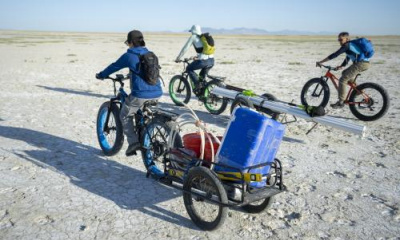SALT LAKE CITY — The levels of the Great Salt Lake have started to stabilize for now, according to a new drought report released by Utah's Department of Natural Resources.
"Great Salt Lake levels have started to stabilize now that temperatures are dropping, storms are moving in and irrigation has concluded for the season. Levels are expected to slowly rise and peak with spring runoff. Currently, the average daily surface elevation is 4,188.8. It surpassed the previous record low (4,190.2) on July 3, the division anticipates the U.S. Geological Survey (USGS) will announce a new historic low in the coming months," the report said.
The lake hit a new historic low earlier this year as a result of water diversion, drought and climate change. It has become an ecological and economic crisis for the state with reduced snowpack, toxic dust and impacts to people's health and wildlife. State leaders have reacted by enacting water conservation policies and funding to try to secure more water for the lake.
Governor Spencer Cox recently issued a proclamation blocking any new water diversions in an effort to keep water going into the Great Salt Lake.
Winter storms recently have helped the snowpack situation, but state officials cautioned the drought is nowhere near being over. Currently, the state has received 145% of normal precipitation which is good for recharging reservoirs and soil moistures.
"People tend to think one good storm will pull us out of drought, but it actually takes many storms over the entire winter to reach average," Candice Hasenyager, director of the Division of Water Resources, said in a statement. "With several years of drought behind us, it will likely take several years to recover."









